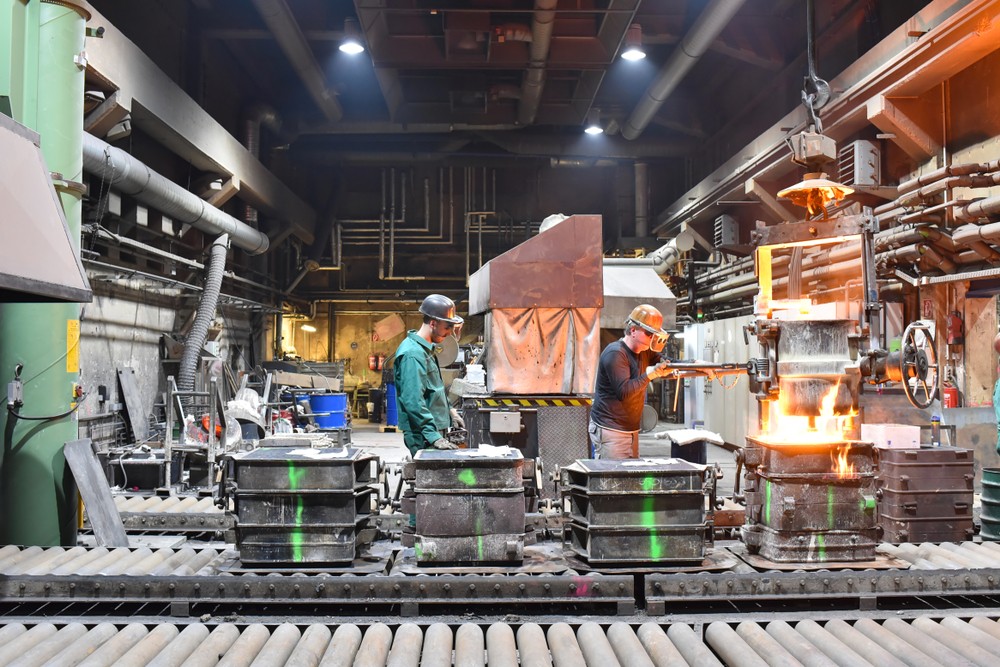Manufacturing Trends

Manufacturing underwent significant changes during the global pandemic. Supply chain disruptions and employment reevaluations created challenges. Yet, today’s manufacturing industry trends show businesses within the space adjusting to a dynamic environment with a resilient mindset and powerful technology.
Trends and Issues for 2023
Manufacturing companies need to optimize their assets to remain competitive among shifting demands and changing economic realities. That includes harnessing the power of technology, maximizing equipment uptime, managing inventories wisely and investing in their talent.
IoT and Big Data
The Internet of Things (IoT) and data analytics have emerged as differentiators for fabrication businesses.
Thanks to numerous IoT-connected sensors, manufacturing companies now enjoy greater visibility into their processes and equipment. Embedded intelligence provides thousands of touch points for gathering real-time insights to reinforce better decision-making.
Once the sensors transmit the data, sophisticated software programs allow experts to model and visualize it more meaningfully — a crucial step for successful forecasting and planning. With up-to-the-minute knowledge across the entire organization, professionals also gain efficiencies to save time and money, improve products and enhance workplace safety.
Predictive Maintenance
Another valuable benefit of IoT is its robust support for predictive maintenance. Sensors no longer just report on machine performance — they’re advanced enough to forecast an equipment malfunction before it happens. Since monitoring is continuous and virtual, there’s no need to close down production to check on the asset’s health.
Companies must take advantage of predictive maintenance to proactively take better care of their machines and keep them in prime condition. For manufacturers, that means less unscheduled and costly downtime and longer equipment life spans.
Supply Chain and Inflation
In the manufacturing industry, supply chain disruption and inflation impact organizations differently depending on their products and sources.
For example, the ongoing uncertainty between Russia and Ukraine affects neon production — an element vital to semiconductors. The same challenges have created higher fuel and energy costs across the board, and port shutdowns have led to procurement delays. Subsequently, raw material scarcity and rising prices have spurred worldwide inflation.
To stay profitable, companies are employing robust risk mitigation strategies. Many are turning to replacement suppliers, rethinking inventory management, restoring domestic operations and embracing greener practices to help reduce waste.
Job Market
The manufacturing industry’s job market is also changing in response to the Great Resignation. Companies fabricating essential products have experienced some growth, while non-essential manufacturing slowed during the pandemic. Turning to automation and technology has helped some companies cope with labor shortages and others optimize to ensure profitability in slower production.
Manufacturing companies have also responded in other key ways. While some are offering higher wages as a talent-recruitment tool, others are attracting more women and minority groups to the field. More are investing heavily in workforce training to foster team members’ development and recruit younger workers. As technology increases in the workplace, manufacturers must ensure their employees’ skills evolve to keep pace.
Use Your Insights to Stay Resilient and Competitive
As job market, supply chain and economic uncertainties continue, your company can embrace its data to find more efficiencies in its processes and planning. Global Electronic Services can help with predictive maintenance as part of our comprehensive industrial equipment services.
Request a quote online, or contact a specialist at 877-249-1701 for more information.
